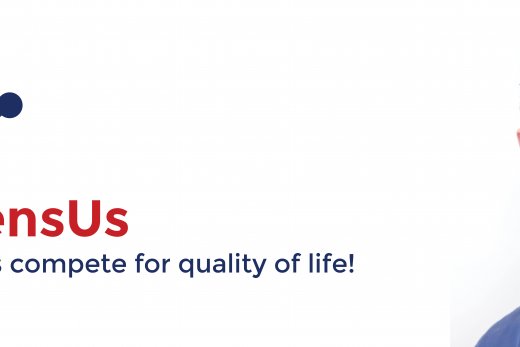26/08/2019
SensUs Interview: Luc Derijks
Introduction of clinical pharmacologist
My name is Luc Derijks, I am a hospital pharmacist and clinical pharmacologist at Maxima Medical Center in the Netherlands. I got my PhD in medicine for clinical research I conducted with inflammatory bowel disease (IBD) patients treated with thiopurines.
Since then, I have a passion for applying personalized medicine in clinical practice. Too often we see that treatments are still applied by the ‘one dose fits all’ principle, while for many drugs this is not ideal. Choosing the right drug and the right dose can be very challenging, tools like therapeutic drug monitoring (TDM) can help us in doing so. At the moment, I’m working on personalized medicine in IBD and rheumatoid arthritis (RA). Both are autoimmune diseases in which the immune system works too hard and attacks cells of the human body.
‘Personalized medicine for immunological treatments is emerging.’
The role of biologicals
During the treatment of RA, an autoimmune disease where the immune system attacks the joints, we use different types of medication. In Europe, we usually follow the EULAR-guidelines, these are evidence-based guidelines for many rheumatologic diseases. For most part, RA-patients are being treated by the ‘step-up’ approach, which refers to a sequential treatment strategy that begins with less potent and usually less toxic drugs, with escalation to more effective but potentially more toxic agents, such as immunosuppressives or biologicals. Currently, a subset of patients with the prediction of a more severe and refractory disease course may qualify for a ‘top-down’ strategy, in which biologicals (often in combination with immunosuppressives) are introduced at an early stage, to prevent disease progression and disability.
‘The top-down approach has been a paradigm shift in the treatment of RA, to prevent irreversible joint damage in patients with severe disease.’
Biologicals are very expensive compared to the other drugs used. We want to give patients the most cost-effective treatment: we want the drug to be effective, but we can’t afford to give everybody a biological, and it is not necessary either. Adalimumab was the best selling drug worldwide until last year, when a biosimilar entered the market. Biosimilars are as effective as the original biological, but substantially cheaper. Because of this, adalimumab drug costs dropped significantly. TDM is also a helpful tool to accompany a switch of originator drugs to biosimilars and objectify clinical outcomes.
SensUs and point-of-care testing
The theme ‘managing rheumatic disease, by measuring with ease’ of SensUs this year is like music to my ears! Anti-rheumatic drugs are still very expensive, so it’s challenging to give the right dose to the right patient for minimal costs so we can treat every patient in need. We therefore perform TDM. Until now, we have to do this in our clinic.
‘Point-of-care testing will substantially contribute to self-management of (chronic) diseases.’
Easy access to TDM will make it easier to apply personalized medicine in this group of patients, which I think is really interesting. With a biosensor, patients can measure their adalimumab concentrations at home at a moment that suits them. In general, I see a great future in biosensing for all kinds of treatments. What I really like about the SensUs competition is that it competitive but stimulates collaboration. I really hope that RA patients in the near future will benefit from this initiative. Do I have any tips for the teams? Well, it is important to keep in mind that rheumatic patients can have rigid fingers, so the sensor should be manageable for these patients. It would also be great if teams add communicating tools to the biosensor, so the outcome can also be sent to the physician immediately.
‘Therapeutic drug monitoring is not only measuring drug concentrations in blood, but also the dosing advice as a result of it.’

Facebook
YouTube
LinkedIn
Instagram